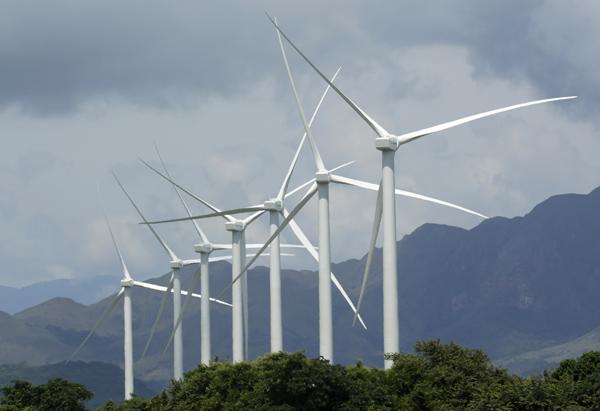You are here
Green energy targets drive renewables capacity to new high
By Reuters - Jun 21,2015 - Last updated at Jun 21,2015
LONDON — Capacity to generate power from renewable sources, including solar, wind and hydro, hit a new high in 2014, driven by a rise in the number of countries with green energy goals, according to an international group of experts.
An 8.5 per cent increase in renewable energy capacity allowed the global economy and energy consumption to grow without a parallel increase in carbon emissions for the first time, according to a report from green energy policy network REN21.
The growth in renewables was powered by green energy targets and other support policies now in place in 164 countries, up from 144 in 2014, indicated Paris-based REN21.
“Renewable energy and improved energy efficiency are key to limiting global warming to 2OC and avoiding dangerous climate change,” REN21 chair Arthouros Zervos said in a statement.
China’s push for renewables and efforts to promote them in wealthy countries helped keep carbon emissions at the same level as in 2013, despite an annual 1.5 per cent increase in world energy consumption in recent years and 3 per cent growth in global gross domestic product last year, said the report.
But government policies such as subsidies for fossil fuels and nuclear energy are constraining the renewables sector, keeping energy prices from non-renewable sources at artificially low levels and encouraging waste, the report added.
“Creating a level playing field would strengthen the development and use of energy efficiency and renewable energy technologies,” said Christine Lins, REN21 executive secretary.
“Removing fossil-fuel and hidden nuclear subsidies globally would make it evident that renewables are the cheapest energy option,” she added.
Renewable energy made up almost 28 per cent of global power generating capacity in 2014, enough to supply close to 23 per cent of electricity demand, the report pointed out.
The amount of energy available from renewable resources worldwide was greater than that produced by all coal-burning plants in the United States, the world’s second-largest coal consumer, it indicated.
Green energy investments in developing countries rose 36 per cent in 2014 from the previous year, reaching $131 billion and coming the closest ever to investments in developed economies, which stood at $139 billion.
China accounted for 63 per cent of the renewable energy investment in developing nations, while Chile, Indonesia, Kenya, Mexico, South Africa and Turkey each invested more than $1 billion.
Solar energy capacity has grown at the fastest rate, largely thanks to rapidly falling costs, followed by wind power, REN21 said.
Globally, more than 1 billion people still lack access to electricity, the majority of them in developing countries.
Related Articles
PARIS — Investment in renewable energy hit a record $286 billion (256 billion euros) in 2015, more than half of which came from developing c
AMMAN — Jordan is awaiting technical and financial offers to implement six wind and solar energy power plants with a total capacity of 300 m
AMMAN — Deputising for Prime Minister Omar Razzaz, Energy Minister Hala Zawati on Tuesday inaugurated the sixth international and fifth Arab












